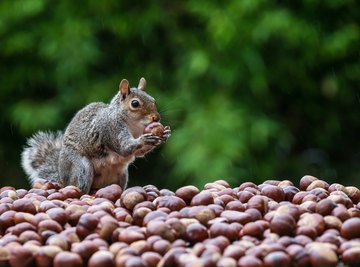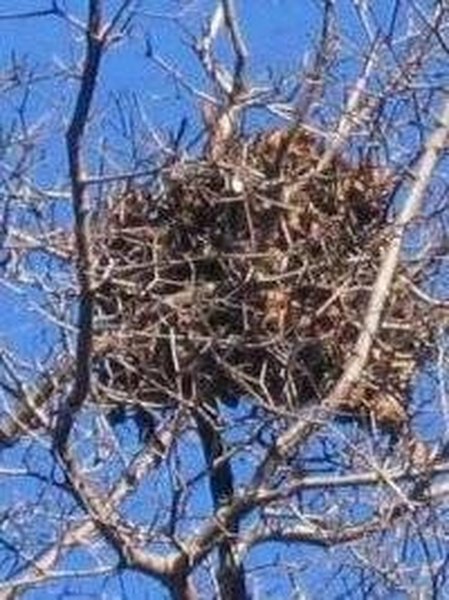
Squirrels belong to the rodent family and are found throughout the world. They are divided into three main families- the ground squirrel, the tree squirrel, and the flying squirrel. Each one of these squirrels sleeps in a different sort of place.
Types
There are many different squirrel species. The most common squirrel in the eastern and midwestern United States is the gray squirrel, which has been successfully introduced into England and lives in most of the northern hemisphere. Red squirrels are smaller than gray squirrels and inhabit the northern regions of the planet, frequenting the forests of temperate and arctic zones. Fox squirrels are another species of squirrel that lives in the United States, as are flying squirrels, which can't really fly-they glide using flaps of skin between their legs. Ground squirrels are found throughout the world as well.
Function

Gray, fox, and red squirrels sleep in their nest, which is called a drey. It is composed of twigs and sticks and then lined with moss, strips of bark, grass, and leaves. The nest is usually built in the fork of a tall tree but can also be constructed in the attic of a house or in the outside walls of a home. Squirrels will sleep in this nest at night and during parts of the day when they are not out foraging for food. Flying squirrels will build a nest of bark and grasses in hollowed out holes in trees. They will sleep together during the winter in these nests to keep warm.
Time Frame
Tree-dwelling squirrels such as the gray, red, flying, and fox squirrel live and sleep in their nest exclusively when they are born. After perhaps as long as six weeks, they have the ability to open their eyes and check out their surroundings. At eight weeks they can eat solid food and spend more time away from the nest. They can crack open the nuts that they eat at ten weeks and most of these types of squirrels are full grown at ten months old, except for the flying squirrel, which reaches maturity at eighteen months. When they are fully developed, they find a place to live and build their own nest in which to live and sleep.
Geography
Ground squirrels differ from tree squirrels in that they live and sleep in a burrow dug into the ground. In northern climates they will sleep through the winter in a state of hibernation. Their body temperature will drop, and their heart rate and breathing slows down. Ground squirrels can sleep this way in their burrows for as long as five or six months, waking up every few days to forage for food before going back to sleep. Ground squirrels in hot climates can also hibernate, but through the summer months, to escape the extreme heat. This occurs in desert regions and is called estivation.
Expert Insight
Red squirrels live in conifer and hardwood forests and build nest usually in a fir tree. They sleep in these nests but they do not hibernate in the cold northern winters. Instead they search for food during the daylight hours. You can tell where a red squirrel lives and sleeps by looking for the chewed up remains of pine cones, which are a favorite food of the species. They will accumulate in great numbers under the tree the red squirrel is living in, along with the pieces of the pine cone that it has torn away in search of the seeds.
About the Author
John Lindell has written articles for "The Greyhound Review" and various other online publications. A Connecticut native, his work specializes in sports, fishing and nature. Lindell worked in greyhound racing for 25 years.
